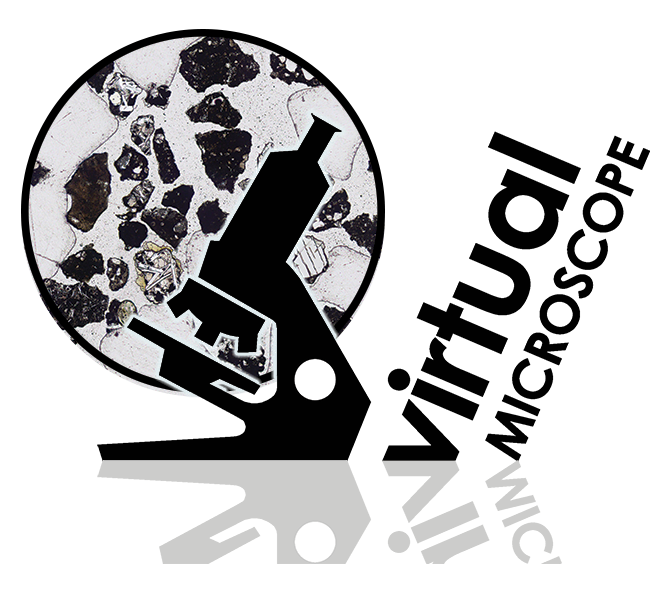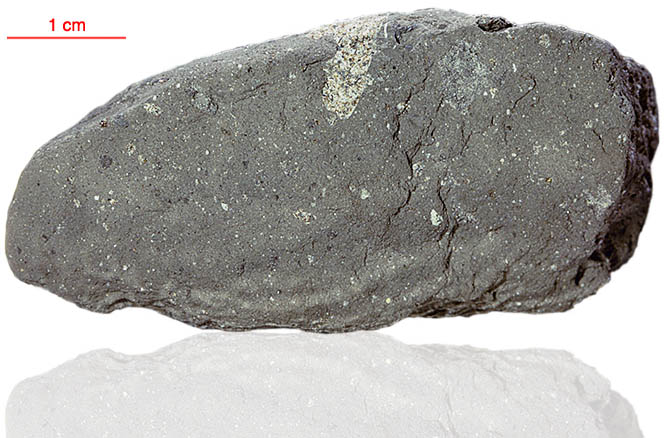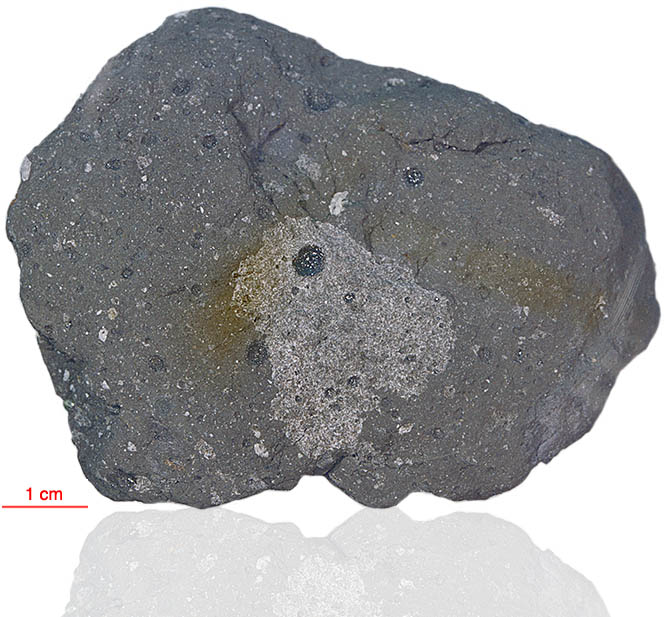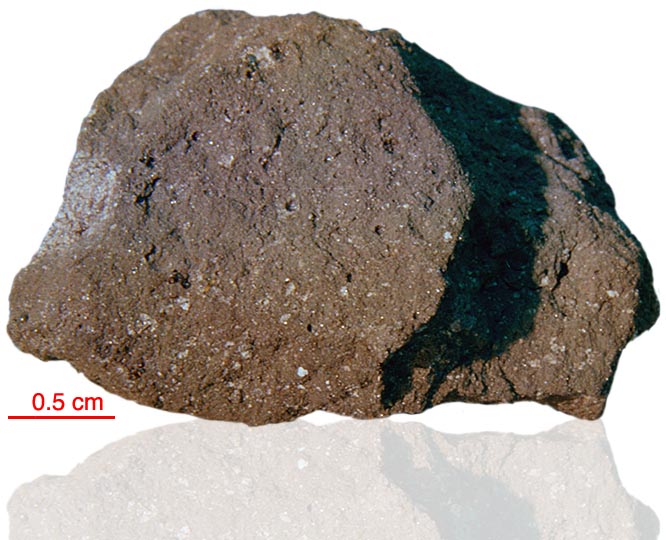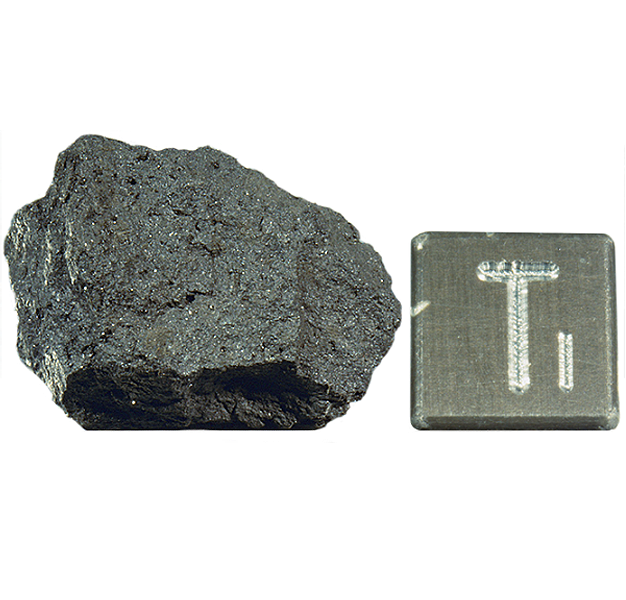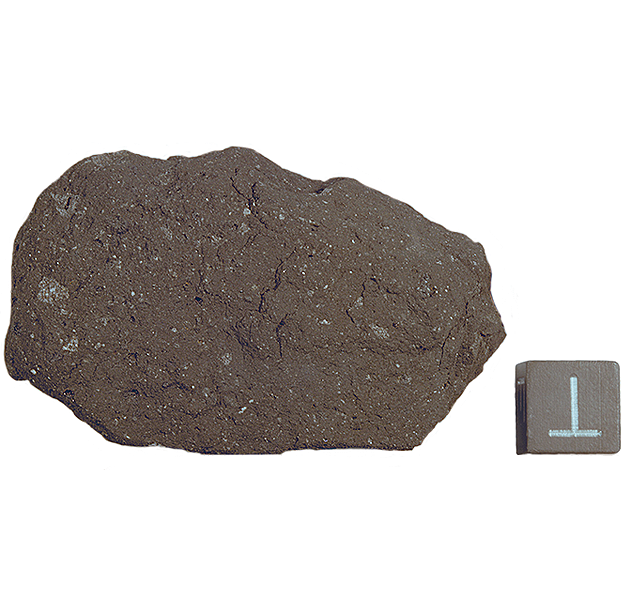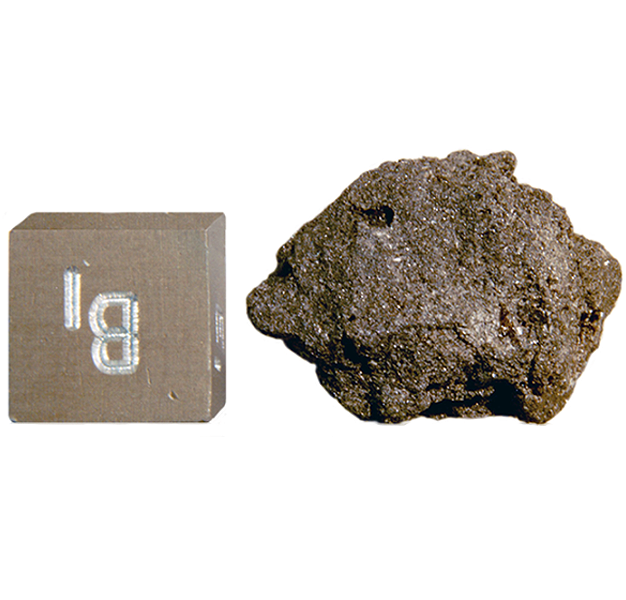
Fact sheet
Sample 10032 is a low-K basalt belonging to the high K suite, that crystallised 3.6 billion years ago (measured by Ar/Ar). It was collected as part of the contingency sample from the area immediately in front of the Lunar Module.
Plagioclase feldspar, pyroxene and ilmenite are the three main constituents. The pyroxene crystals are chemically zoned (augite to pigeonite cores). Additionally, olivine, cristobalite, phosphate and glass are present, but in low abundance. In reflected light, the iron sulphide troilite can be seen as small pale yellow crystals, some hosting minute inclusions of metallic iron.
Further details of this and other Apollo samples are here: http://curator.jsc.nasa.gov/lunar/
The Apollo 11 samples create an iconic collection since they were the first rocks collected by humankind that were returned to Earth from another solar system body. The Apollo 11 team collected and returned 22 kg of rock and soil samples.
Apollo 11 launched from Cape Kennedy on 16 July 1969. An estimated 530 million people watched Armstrong's televised image and heard his voice describe the event as he took "...one small step for a man, one giant leap for mankind" on 20 July 1969.

